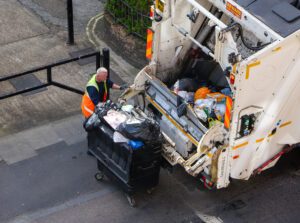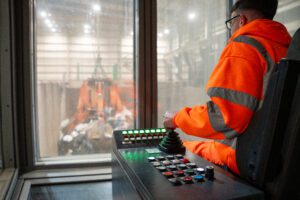The following statement is issued by the Environmental Services Association (ESA) on Tuesday 15th October 2024
“The vital role of energy-from-waste (EfW) facilities is to treat societal waste left over after recycling. In 2023, the United Kingdom treated circa 16 million tonnes of waste across an EfW fleet of around 60 facilities.
“Historically, this “residual waste” left over after recycling was sent for disposal in landfill but recovering energy from it, using EfW facilities, is now the predominant means of treating residual waste in accordance with the waste hierarchy – the long-standing policy framework which guides decisions about how to most sustainably manage waste materials.
“It is important to point out that neither local or national policy prioritises the use of waste as a fuel to generate energy over other sources. The energy generated is simply a beneficial by-product of treating waste, which is a vital societal function.
“Disposing of household-like residual waste in landfill, which is a mixture of biogenic and fossil-based materials, releases methane – a powerful greenhouse gas (GHG). An independent report produced by consulting engineers Fichtner, in 2021, estimated that the net GHG emissions of sending one tonne of typical residual waste to landfill is 432.7 kgCO2e. By comparison, Fichtner estimated that the net GHG emissions of sending one tonne of residual waste to conventional EfW is 230.9 kgCO2e. It is therefore estimated that EfW saves approximately 200kg CO2e for every tonne of waste treated compared with landfill.
“The growth in overall carbon emissions from EfW corresponds with the growth in the number of facilities over the past decade, which have moved millions of tonnes of residual waste out of landfill – saving millions of tonnes of GHG emissions compared with maintaining the status quo. It is simply incorrect to compare the carbon intensity of energy produced as a by-product of waste treatment with other forms of energy generation without accounting for these avoided emissions associated with landfill – since the primary role of EfW is to treat residual waste. Clearly, other forms of energy generation do not also fulfil this vital function.
“Much of the climate and environmental impact of society’s waste is designed-in at source, which is why our industry continues to campaign for more sustainable product and packaging design choices that avoid waste and support re-use and recycling. The emissions associated with residual waste treatment are challenging to avoid and require systemic change, but our sector has a credible decarbonisation pathway to achieve net-zero emissions by 2040 with the right policy landscape. In particular, decarbonising residual waste by recycling more plastics, and deploying carbon capture and storage to EfW facilities wherever possible, will both play an important role in our pursuit of net-zero emissions and a more circular economy.”
“Since the early 2000s, recycling rates in England have risen from below ten per cent to more than forty per cent today. This shift was largely a result of the Landfill Tax, which underpinned investment by our industry in new recycling markets and infrastructure.
“Official figures (see Figure 7 in linked webpage) show that many of the significant gains in recycling performance over the past twenty years coincided with the development of energy-from-waste infrastructure. Recycling rates have remained largely stagnant since 2012/13 while further EfW development has removed millions of tonnes of residual waste from landfill.
“The development of EfW over the past decade has been complementary to efforts to recycle more and is not an impediment to further recycling. Stagnant recycling rates are only indicative of a failure to develop recycling policies which, under the prevailing market conditions, have found their equilibrium. EfW facilities simply deal with the waste left over. If we want to increase recycling we must encourage and incentivise more sustainable design choices; investment in recycling services and behaviour change and, importantly, corresponding market demand for recycled materials.
“The Government’s Resources and Waste Strategy (RWS) aims to achieve a national target of 65% municipal recycling by 2035 by introducing Extended Producer Responsibility for packaging; deposit return schemes and simplifying household recycling. Additionally, the Plastics Packaging Tax was introduced to stimulate demand for recycled plastic. However, the RWS reforms still haven’t come to fruition after years of delay and the plastics packaging tax, at its current rate, is struggling to compete with virgin plastic. The ESA and its members urge the new government to follow-through on these long-promised reforms and we would like to see an escalator to the plastic packaging tax in Labour’s Autumn Budget.
“However, even if these reforms were introduced today and rapidly achieved their maximum anticipated recycling performance, there would still remain millions of tonnes of residual waste in need of treatment through either landfill or energy recovery.
“Local authorities have a statutory duty for safely and reliably managing waste produced in their region. In the majority of cases, the need case for new regional or local energy recovery infrastructure is first established by a local authority (or partnership of authorities), based on current and anticipated future needs over the lifetime of any new asset, and in the context of external drivers affecting waste volume and composition. Future investment in local recycling services, national policy drivers, and associated recycling performance levels are a component of these considerations.
New energy recovery facilities require a significant investment and a typical-size facility can cost anywhere in the region of between £250-350 million to build – with the investment recouped over the operational lifetime of the plant.
“Local authorities may choose to finance, build and/or operate their own new infrastructure to meet this need and their statutory obligations, but in many cases, the private sector is invited to bid competitively for the opportunity to finance, design, build and operate new plants on the basis of the anticipated required capacity.
“As such, contracts between operators and local authorities represent a way of delivering this vital public infrastructure at best value (achieved through competition) while sharing risks between both parties and accessing the expertise of the private sector.
“The notion that EfW locks local authorities into contracts which incentivise them to suppress recycling is simply misplaced and distracts from the national failure to develop a more circular economy – which the ESA and its members have long campaigned for.
“The ability of EfW and recycling to successfully co-exist alongside each other is also evidenced by the fact that the majority of the top ten councils with the highest recycling rates also make use of EfW to treat the left-over waste. EfW is complementary to efforts to recycle and every household in the UK has access to kerbside recycling services provided by their local authority. Recycling sorting and collection activity always takes place upstream of treating waste through EfW – which points to upstream failures in recycling.
“The need to treat residual waste is a symptom of stagnant recycling performance, not the cause of it.”




